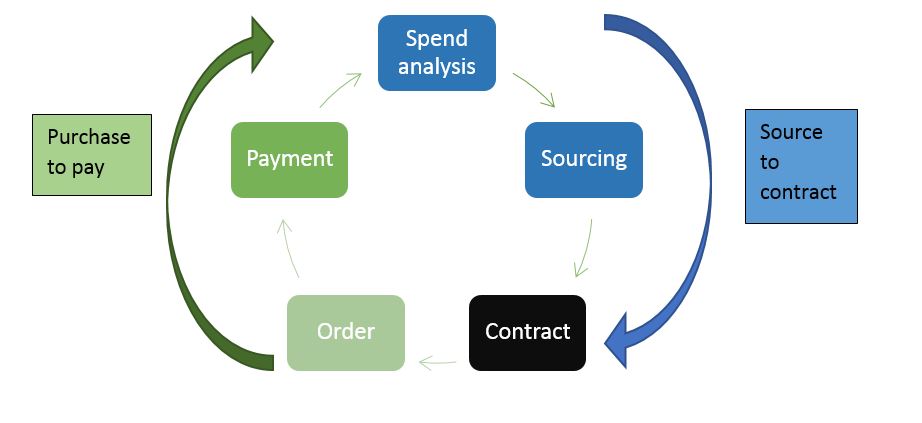
A picture says more than 1000 words. So, this diagram is the complete Source – to – pay (S2P) process, which consists of two parts: the source – to -contract (S2C) and Purchase – to – Pay (P2P).
Source-to-contract
This is the sourcing part of procurement.
Firstly, we have to do the spend analysis to figure out what we need to procure. So, we either take the historical data or, in the case of a new product, establish the parameters with our stakeholders Here we are creating our goals: quantity, delivery plan, target cost.
The next step is to reach out to the suppliers and source the goods or services. This is the part where we issue tenders or RFQ’s, either using email and phone of some of the e-tendering systems. Once we get the initial quotes, usually we negotiate further. This is a trap many new procurement people fall in quite often: the cheapest offer is not necessarily the best one. It is needed to check other terms as well. Who is bearing transportation, customs or other costs? What about payment terms, which are in some industries of very high importance. Not to forget the warranty and price lock clause.
Once all terms are agreed, and the internal stakeholders are in agreement with our suggestion (don’t forget this part, we are a service for them), we are creating the contract. The contract summarizes the terms and condition of our agreement. I did in the past contracts with fixed prices for the duration of the contract, but as well with clauses that allowed price changes. The important thing is to have everything that was agreed in writing.
The contract usually is the end of the involvement of the Sourcing manager in large corporations. Once the contract is signed, it serves as the base for orders. This is the complete S2C process.
Purchase-to-pay
This part of the process deals with operational procurement. Some call this tactical procurement, but in its basic, it is the day-to-day process of arranging the goods needed for our organization.
So, the contract is signed, and we can start placing orders with our new supplier. The order states, at least, the item name, quantity and price. And be aware, it is a document binding for both parties. If the goods appear on your gate and you decide that you do not need them anymore, technically you are in breach of contract. Most suppliers will forgive you this if it happens once, as they want to continue supplying. But if it is a custom-made product, the supplier can claim full value.
Once the goods are delivered, the next step is payment. It is common to get the goods on agreed credit terms, but there are many possibilities available in this area. In the case of larger projects, the supplier will ask a Letter of credit, where your bank guarantees that the payment will be done as per the agreement terms. Also, there are options for the supplier to sell his receivables from your company, hence another organization will contact you for the payment. But, let us not go too deep into it, as it is a quite complicated topic.
So, here we are. These steps complete the P2P process, and we have closed the circle. Well, not quite yet. It is a circle because the data we have generated in the P2P process is the base data we needed for our spend analysis we started the process with. Therefore, the operational (tactical) procurement team must collect as much data as possible. About the prices, supplier relationship and reliability, quality issues and warranty claims. The more data is available and the better quality they are, it makes the job of the sourcing team easier.



Pingback: What is E-procurement? - ABC of Procurement
Pingback: Strategic sourcing – is there a definition of it?